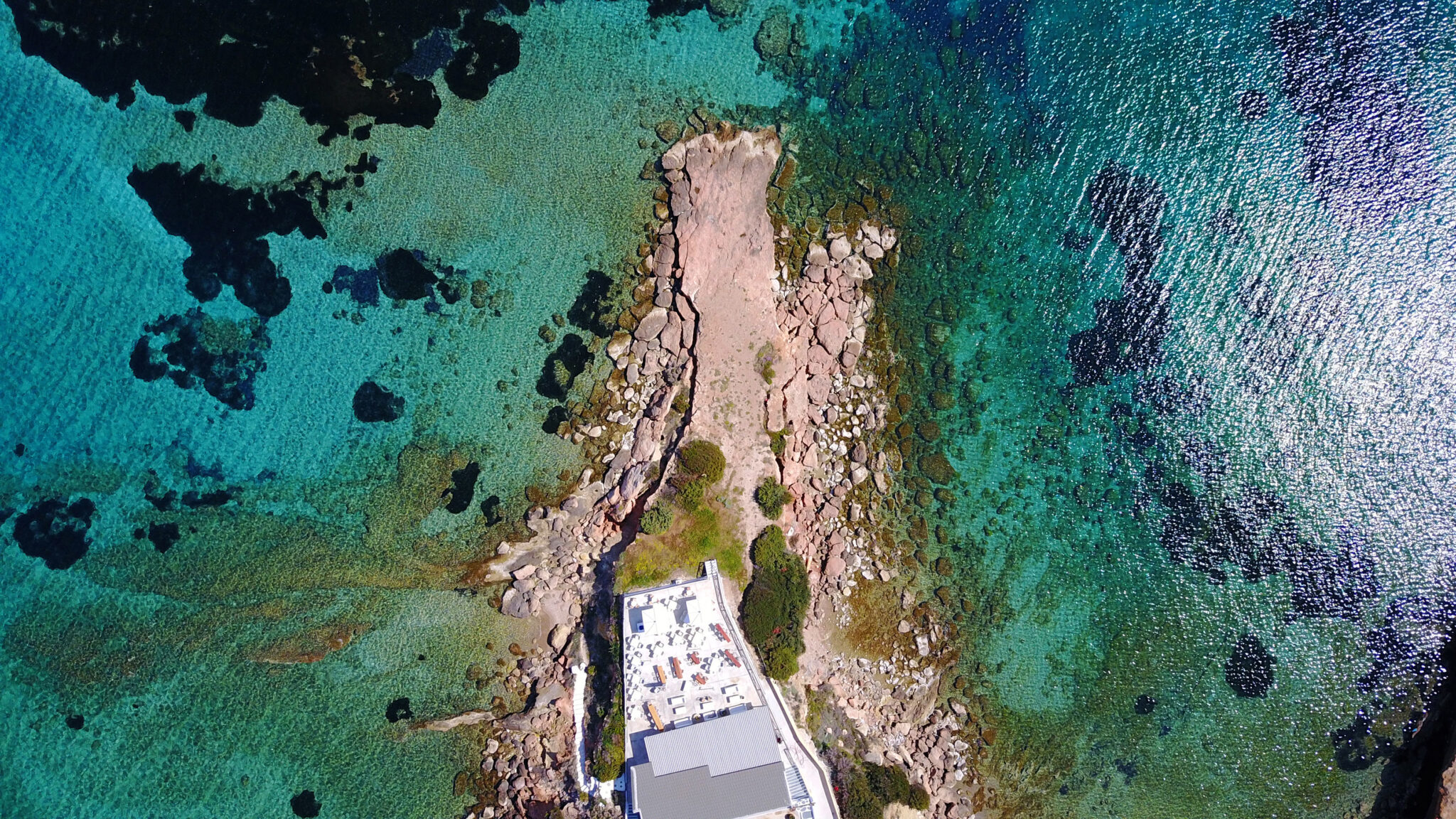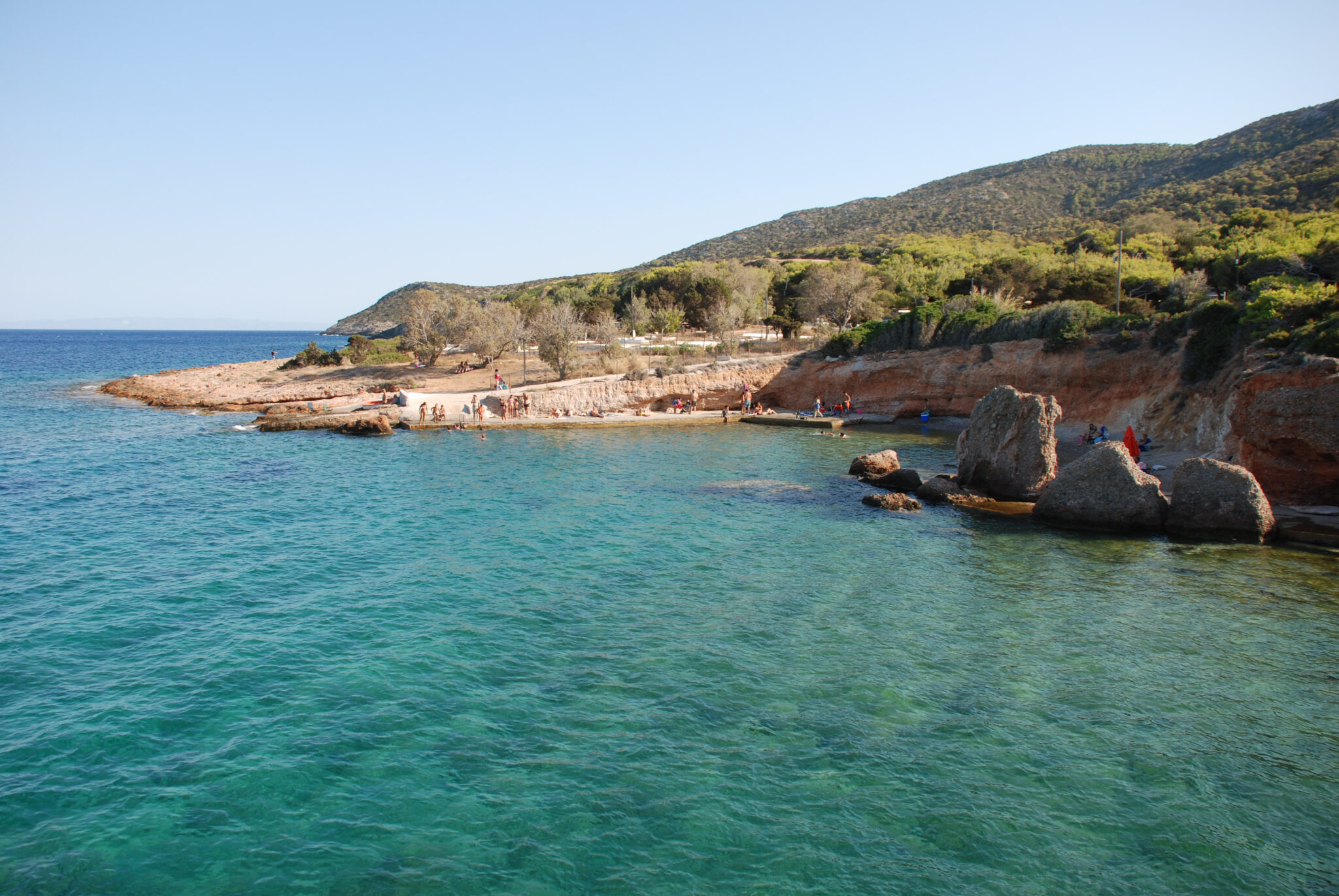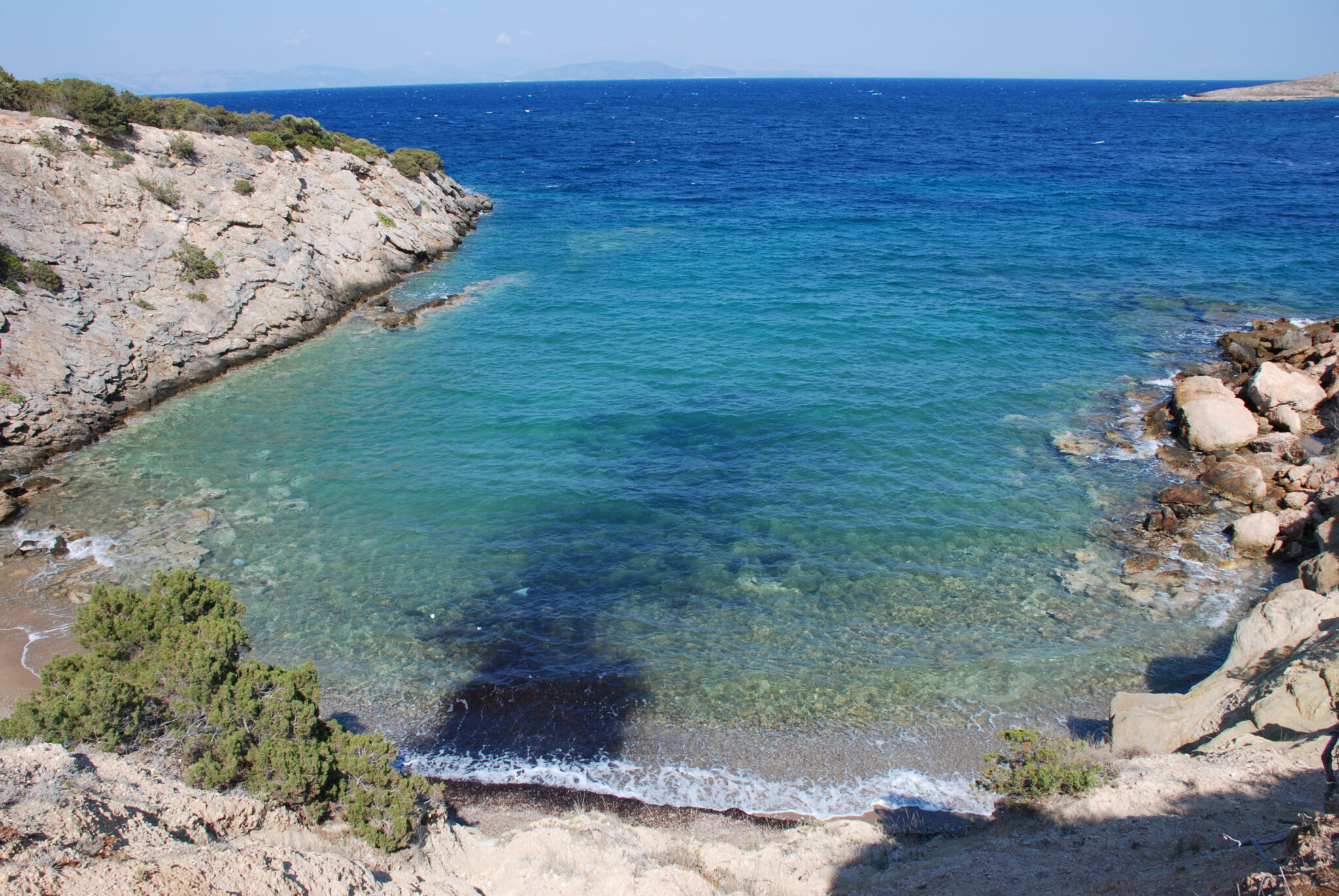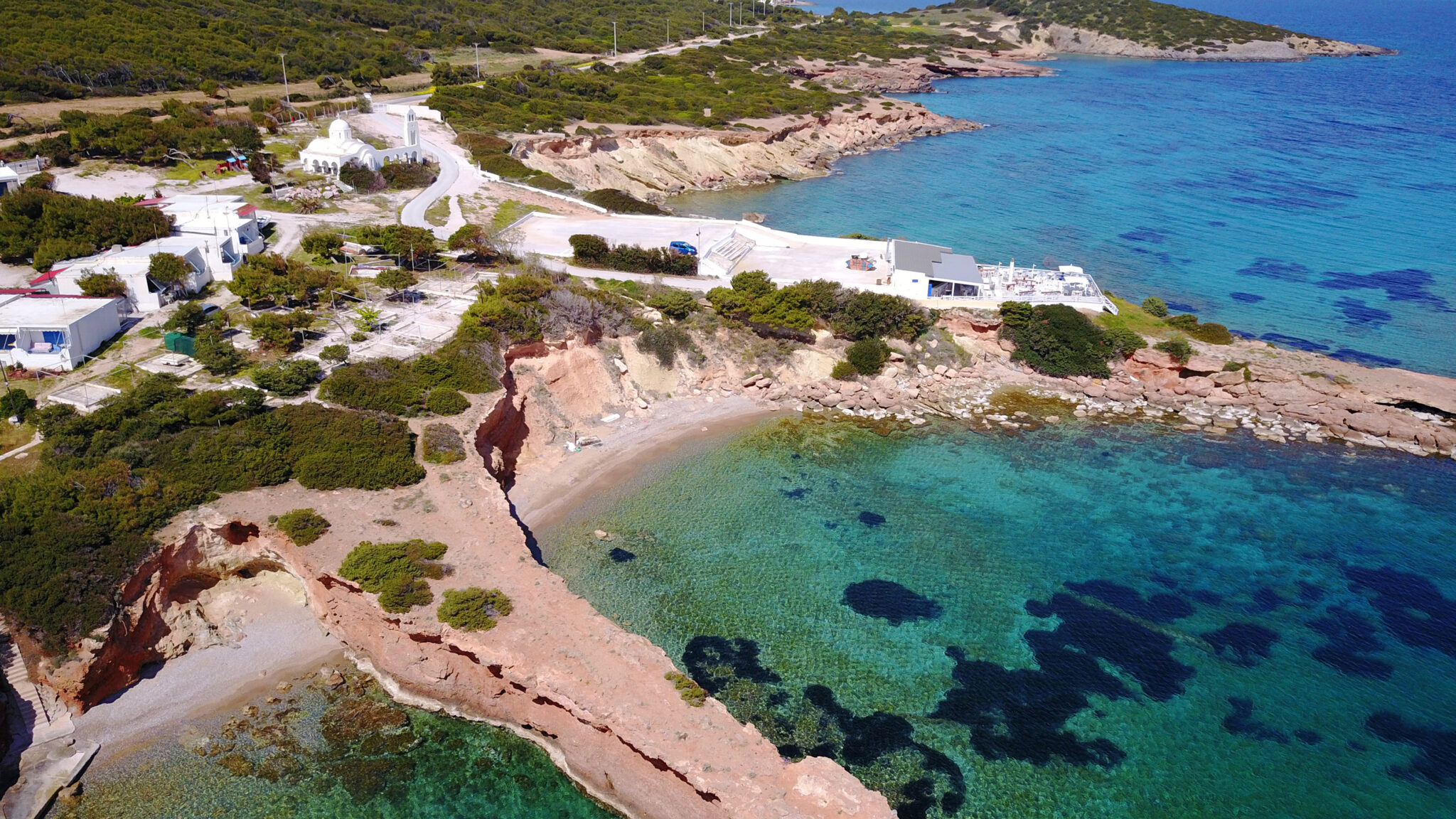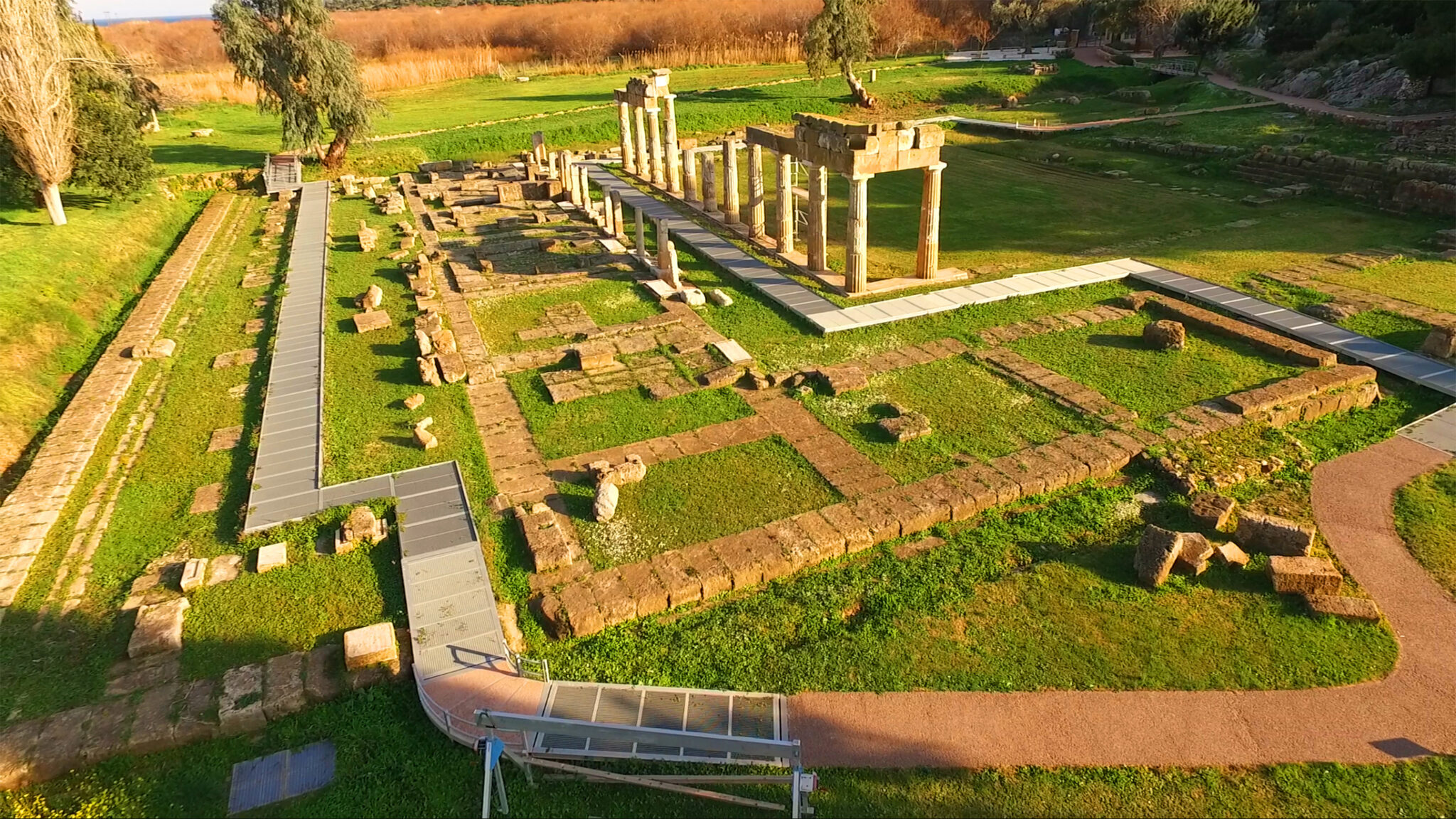Compared to other coastal destinations in Attica, Vravrona is rather underrated. However, nestled between the timelessly popular resorts of Loutsa and Porto Rafti there is a beach that is perhaps the most over-looked in the wider Attica region.
The seaside settlement of Chamolia, near Vravrona, is 45 kilometers and about a 50 minutes drive from the center of Athens using the Attiki Odos. If you want to avoid paying tolls, the distance is actually a little shorter but the roads are slower. Whichever way you take, on reaching the village and after passing the main beach, head to the right. After 500 meters you will find a small dirt road that leads to the lovely Mikri Chamolia. The aquamarine waters of the sea, the natural background, and the zigzags of the coastline are more suggestive of an exotic island than the humble Attican coast.
It is a small creek with sand and pebbles, blessed by being almost always sheltered from the waves. Nowadays, thanks to the Internet, the beach is not as secret as it was a few years ago. If you want to find a space on the beach and not on the rocks, it is advisable to come here early, especially at weekends. However, many people come just to spread their towel on the rocks and slabs that make an ideal platform for diving into the crystal clear waters. The beach is not organized; there are no sunbeds and umbrellas but shade is given by the tamarisks and cavernous rockfaces.
While you swim you will have a view of the opposite coast and the hills of Vravrona, a backdrop that you could hardly imagine was in Attica, but if you want to visit a larger beach, 20 minutes down the coast is Loutsa, with its vast sandy strand and shallow sea, a classic holiday choice for Athenians since the 1980s.
The temple of Artemis and the wetlands of Vravrona
It is worth setting out relatively early for Chamolia to combine your swim with a visit to the archaeological site of Vravrona and the museum. The temple of Artemis of Vravrona was one of the most important sanctuaries of antiquity. The current archaeological site is dominated by the small Doric temple of Artemis, built on the site of an older Archaic temple in the first half of the 5th century BC. As well as Artemis, Iphigenia was also worshipped here, and a visit to the accompanying museum is instructive. It is small but full of findings of great interest such as the numerous statues of little boys and girls, as Artemis was not only the goddess of hunting but also the goddess of childbirth and children.
Around the temple, there are wonderful wetlands with lush vegetation. The archaeological site is located on the banks of the river Erasinos. Just before it flows into the Euboikos, the river slows and pools, creating an ecosystem in which frogs, turtles and harmless water snakes thrive. It is hard to believe that the busy metropolis of Athens is less than an hour away.
The beach on the map
Read also:
Tsiou: a well-hidden beach near Athens
Five lovely beaches near the centre of Athens
Aegina: The most famous of the islands close to Athens



